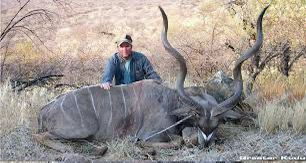THE Namibian economy is expected to grow at 3,9 per cent this year after having slowed to 3,6 per cent in 2007, although the Bank of Namibia has had to revise its optimistic forecast of a 4,7 per cent growth rate this year that it made in January.
“The downward revision was necessary to reflect the effects of pronounced changes in the external and internal economic environment,” said Bank of Namibia Deputy Governor Paul Hartmann on Tuesday. “The downward revision was mainly in the mining sector, specifically the diamond industry, where output is expected to decline due to reduced onshore mining, and in the electricity sub-sector as a result of high import and operational costs,” he told reporters at an economic review.Despite these factors, Namibia’s economy had remained resilient during the second quarter of 2008, which are the months April to June, with agriculture, mining and the services sector keeping the economy steady.More cattle were marketed as usual at the end of the rainy season.The construction sector is expected pick up due to the expected new mining activities and increased public infrastructure spending.The other mining sub-sector, which consists mainly of uranium, zinc, copper, gold, lead and silver mining, is expected to grow by 17 per cent in 2008, according to Dr John Steytler, Director of Research at BoN.”Diamond output is projected to decline further by 1,8 per cent this year, from a preliminary negative growth of 0,8 per cent in 2007, mainly due to the depletion of onshore mining activities,” Steytler told reporters.”The downward revision was mainly due to operational bottlenecks experienced and the closures of some mining production sites due to high production costs in terms of fuel and electricity.”On the positive side, diamonds prices are currently high due to global supply shortages coupled with favourable exchange rates.Diamond output is assumed to contract further this year.Other mining’s output is projected to increase on the back of an increase in uranium production.Agricultural growth is estimated to increase at a slower pace because of high input costs, restocking due to good grazing, the effects of floods and cattle diseases like foot-and-mouth.The fishing sector has not been performing well for the past few years and this trend is expected to continue during 2008.Growth in manufacturing this year is assumed to be driven by other food products and beverages and refined zinc sub-sectors.The communication sector is expected to grow positively on the back of the positive performance of the mobile telecommunications category, while transport is expected to grow in tandem with the general pace of the economy.According to the BoN outlook, there still are long-term challenges that need to be addressed if the economy is to grow at a significantly faster pace.”These policy challenges relate to the transformation of the very structure of the Namibian economy and the productivity and skills level of her people.Despite the above, the driving force to growth would remain the mining sector, particularly an increased production in uranium,” the bank said.Inflation in Namibia soared to almost 13 per cent in August this year due to high food and fuel prices.”The downward revision was mainly in the mining sector, specifically the diamond industry, where output is expected to decline due to reduced onshore mining, and in the electricity sub-sector as a result of high import and operational costs,” he told reporters at an economic review.Despite these factors, Namibia’s economy had remained resilient during the second quarter of 2008, which are the months April to June, with agriculture, mining and the services sector keeping the economy steady.More cattle were marketed as usual at the end of the rainy season.The construction sector is expected pick up due to the expected new mining activities and increased public infrastructure spending.The other mining sub-sector, which consists mainly of uranium, zinc, copper, gold, lead and silver mining, is expected to grow by 17 per cent in 2008, according to Dr John Steytler, Director of Research at BoN. “Diamond output is projected to decline further by 1,8 per cent this year, from a preliminary negative growth of 0,8 per cent in 2007, mainly due to the depletion of onshore mining activities,” Steytler told reporters.”The downward revision was mainly due to operational bottlenecks experienced and the closures of some mining production sites due to high production costs in terms of fuel and electricity.”On the positive side, diamonds prices are currently high due to global supply shortages coupled with favourable exchange rates.Diamond output is assumed to contract further this year.Other mining’s output is projected to increase on the back of an increase in uranium production.Agricultural growth is estimated to increase at a slower pace because of high input costs, restocking due to good grazing, the effects of floods and cattle diseases like foot-and-mouth.The fishing sector has not been performing well for the past few years and this trend is expected to continue during 2008.Growth in manufacturing this year is assumed to be driven by other food products and beverages and refined zinc sub-sectors.The communication sector is expected to grow positively on the back of the positive performance of the mobile telecommunications category, while transport is expected to grow in tandem with the general pace of the economy.According to the BoN outlook, there still are long-term challenges that need to be addressed if the economy is to grow at a significantly faster pace.”These policy challenges relate to the transformation of the very structure of the Namibian economy and the productivity and skills level of her people.Despite the above, the driving force to growth would remain the mining sector, particularly an increased production in uranium,” the bank said.Inflation in Namibia soared to almost 13 per cent in August this year due to high food and fuel prices.
Stay informed with The Namibian – your source for credible journalism. Get in-depth reporting and opinions for
only N$85 a month. Invest in journalism, invest in democracy –
Subscribe Now!






